

Sign The Guestbook!
Read The Guestbook!
since Feb 26, 1998
This page hosted by
Get your own
Free Home Page

|

Sign The Guestbook! Read The Guestbook! since Feb 26, 1998 This page hosted by Get your own Free Home Page |
|
Aneurysms 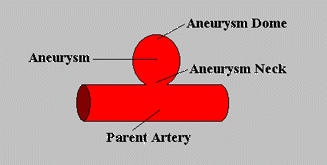 They can arise from the side of the wall of an artery, but their most usual location is at the bifurcation of an artery, where it divides into two smaller ones. 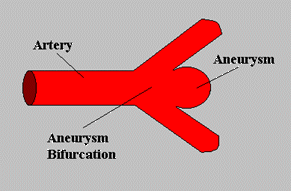 There is also another form af aneuysms, the fusiform ones. They have a different shape, more elongated and the can not be distinguished fr´m the parent artery wall. 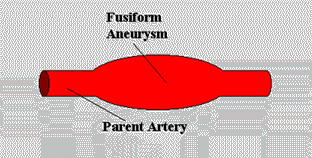 The cause of aneurysms in not yet absolutely clear. Most of them are considered to be caused by congenital defects of the artery wall which in time leads to the formation of the aneurysms. Some are caused by infection and destruction of the artery wall by bacteria, and they are called mycotic aneurysms. An aneurysm in the brain can be very dangerous. They tend to rupture (break) and cause brain hemorrhage which can lead to death, coma or severe disability. Anurysms in the brain are usually discovered after they rupture but some can be discovered incidentally during diagnostic tests for other reasons. The discovery of an aneurysm, whether it has ruptured or not is an absolute indication for its treatment because there is a great risk for a new rupture. The treatment consists of its exclusion from blood circulation so that it can no loger be ruptured. There are two ways to accomplish this: Conventional neurosurgical operation, with craniotomy to reach deep inside the brain, find the aneurysm and close it using a special clip. This is a major operation with serious risks and compications even when performed by the best neurosurgeons. The altenative is the endovascular approach with the navigation of a very thin catheter from the femoral artery into the brain arteries and to the location of the aneurysm. Then the cavity of the aneurysm is obliterated (filled) with special platinum coils (GDC coils) and the blood can no longer enter the aneurysm and force it to rupture. This is a very safer procedure with less patient discomfort and very short rehabilitation time. Below are some angiographic examples of brain aneurysms obliterated with the use of Endovascular Neurosurgery techniques: Case 1 A  B B  A: Saccular aneurysm of the basilar artery of the brain (lateral projection) B: Aneurysm obliterated by endovascular approach using GDC coils Case 2 A  B B  A: Saccular aneurysm of the internal carotid artery of the brain (anteroposterior projection) B: Aneurysm obliterated by endovascular approach using GDC coils Case 3 A 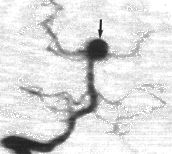 B B  A: Saccular aneurysm of the basilar artery of the brain (anteroposterior projection) B: Aneurysm obliterated by endovascular approach using GDC coils Case 4 A 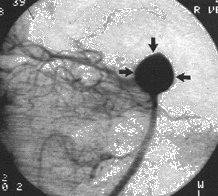 B B  A: Giant saccular aneurysm of the basilar artery of the brain (lateral projection) B: Aneurysm obliterated by endovascular approach using GDC coils Page maintained by: Vasilis Katsaridis, MD |